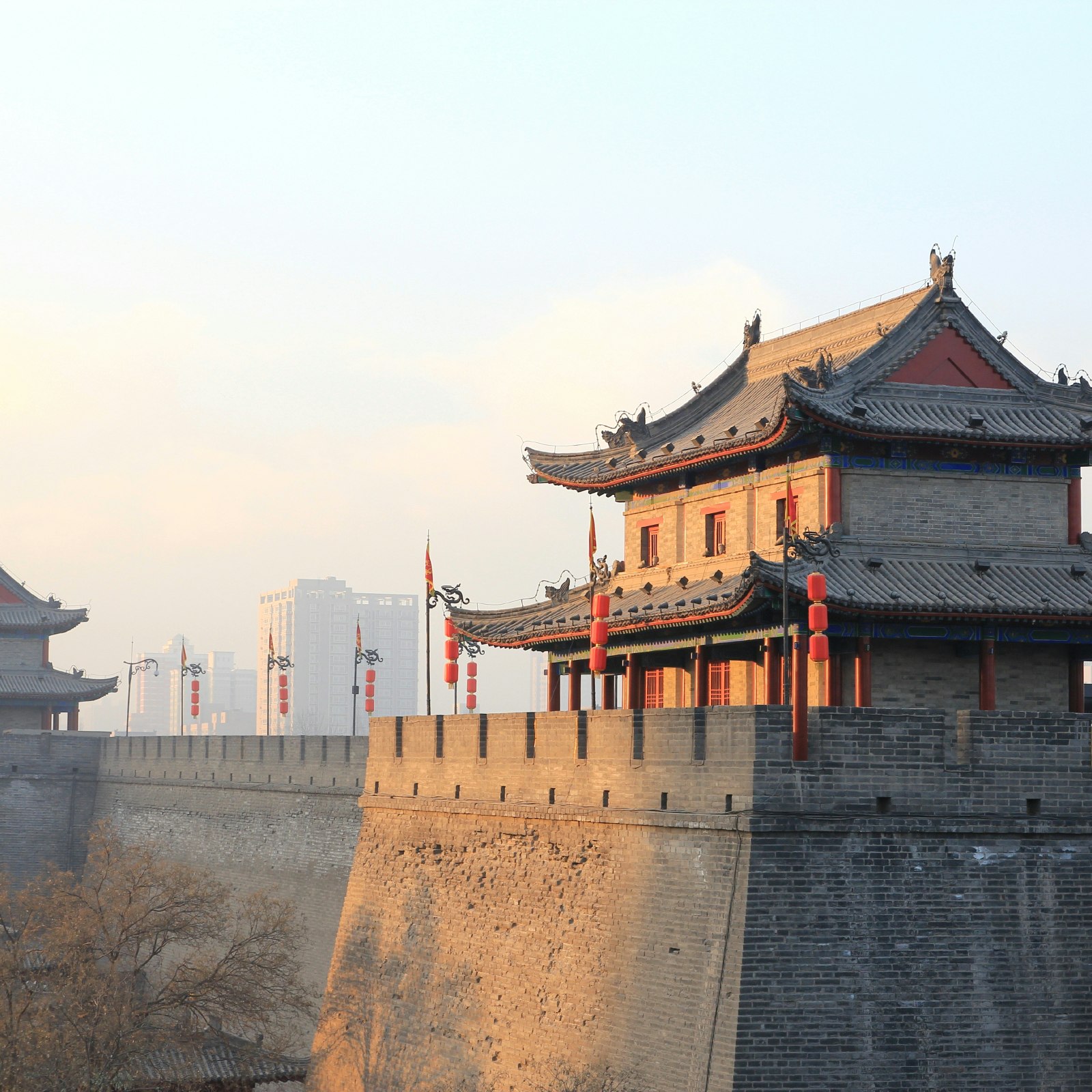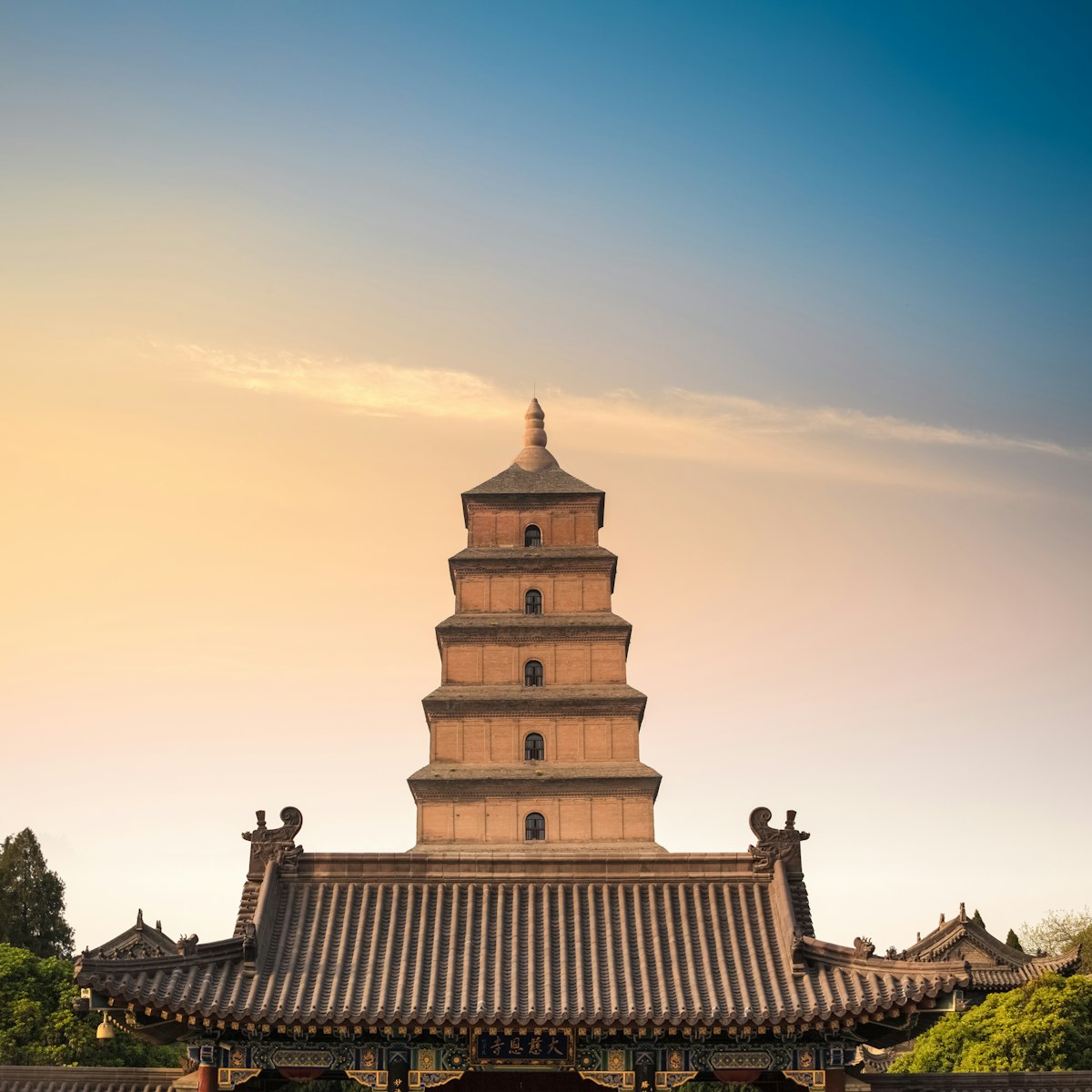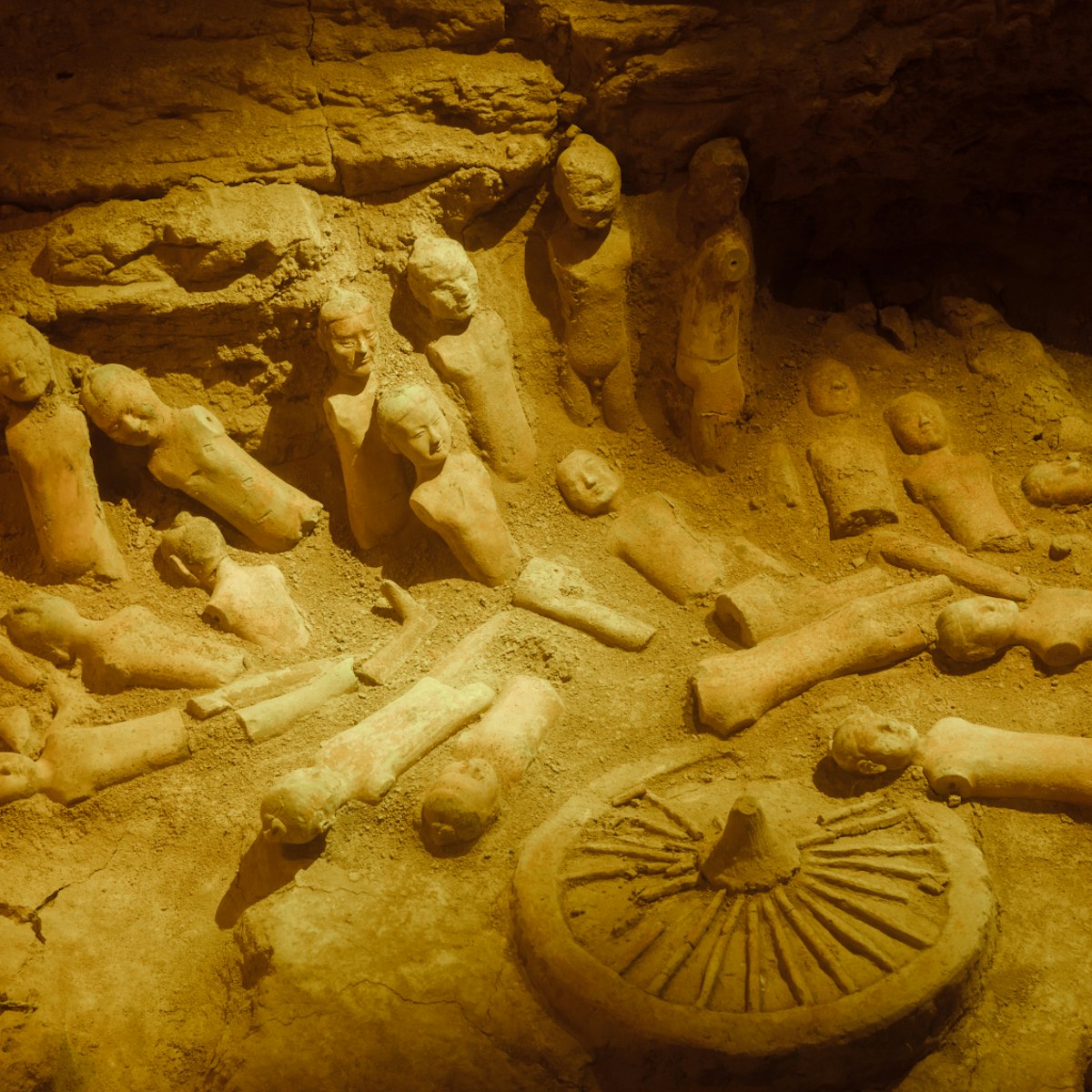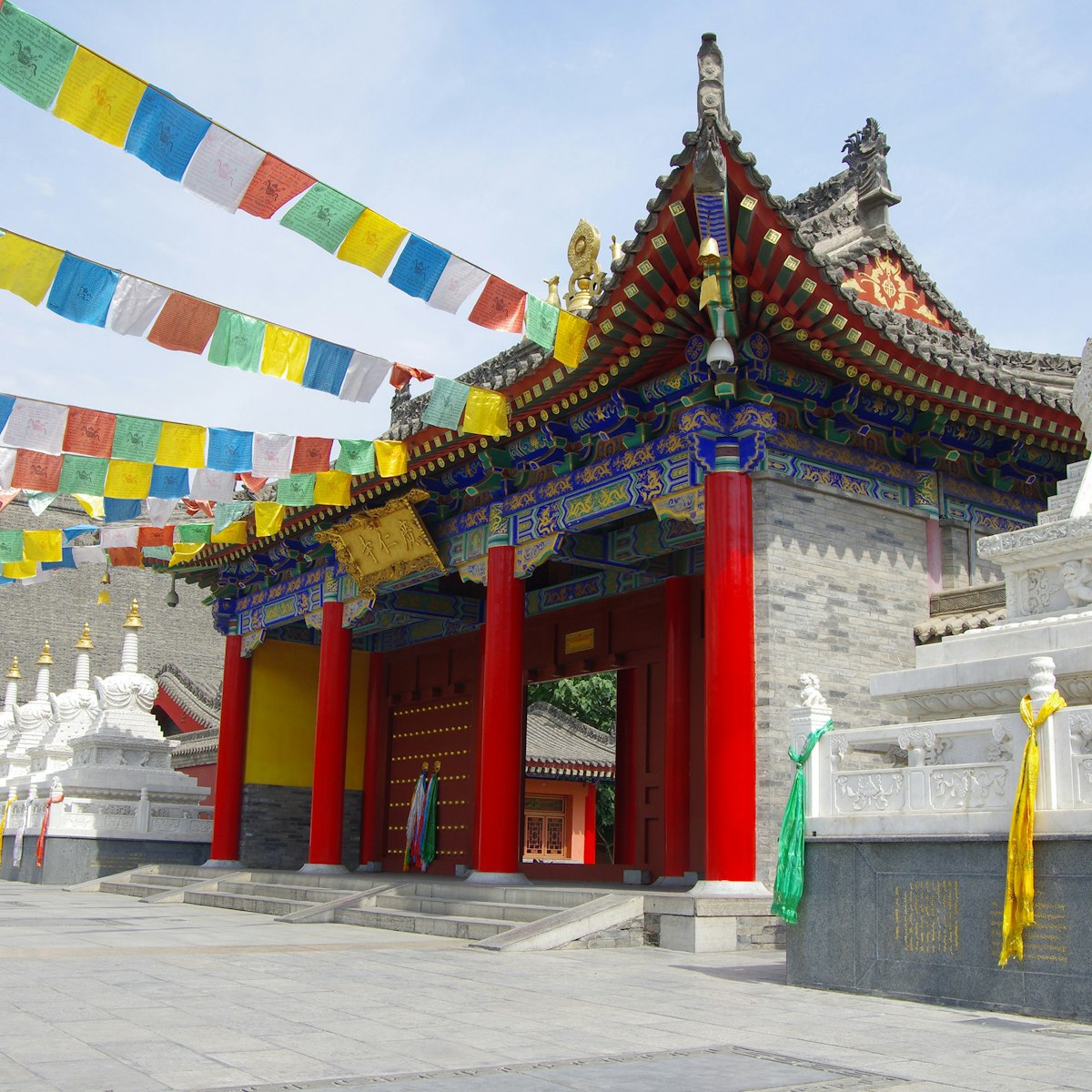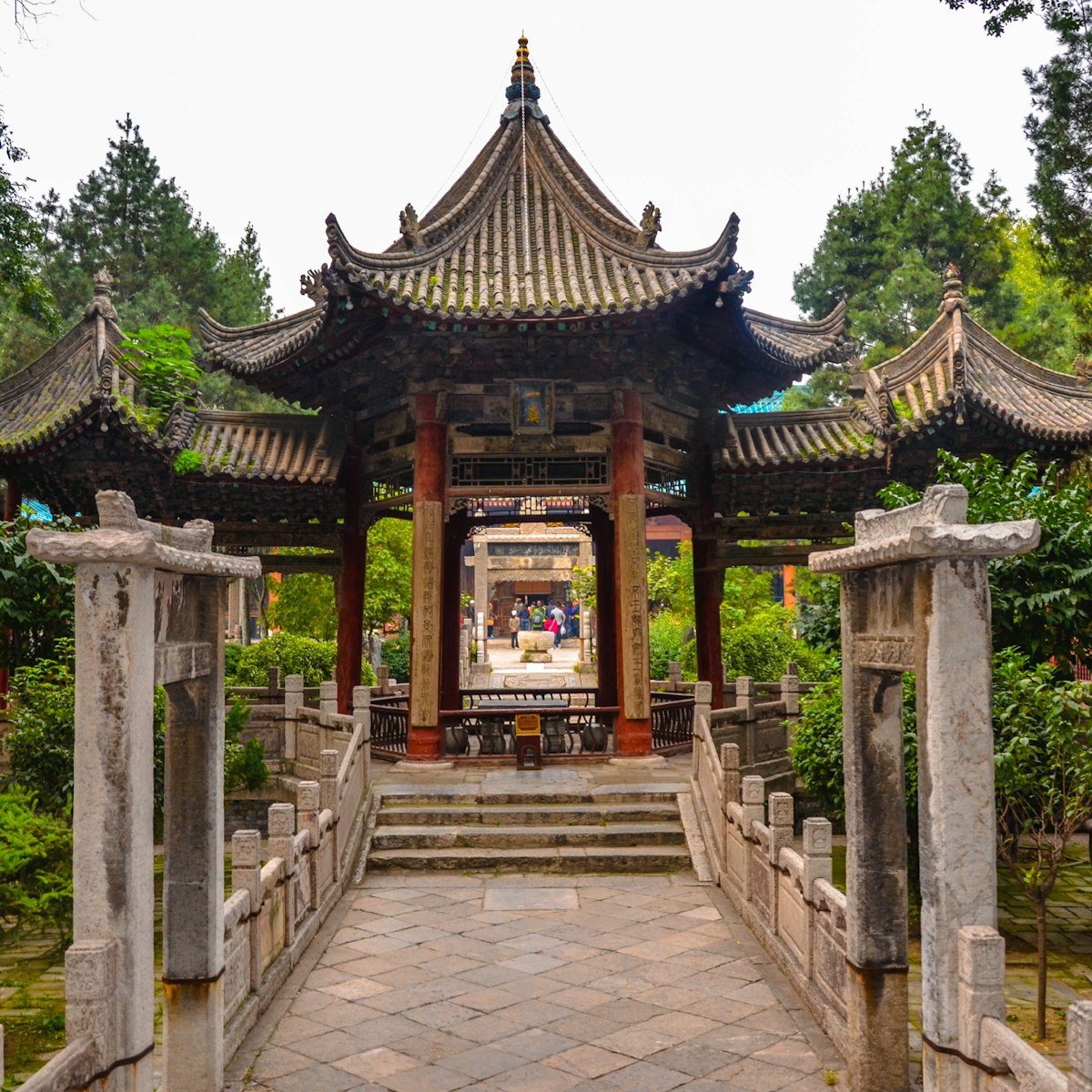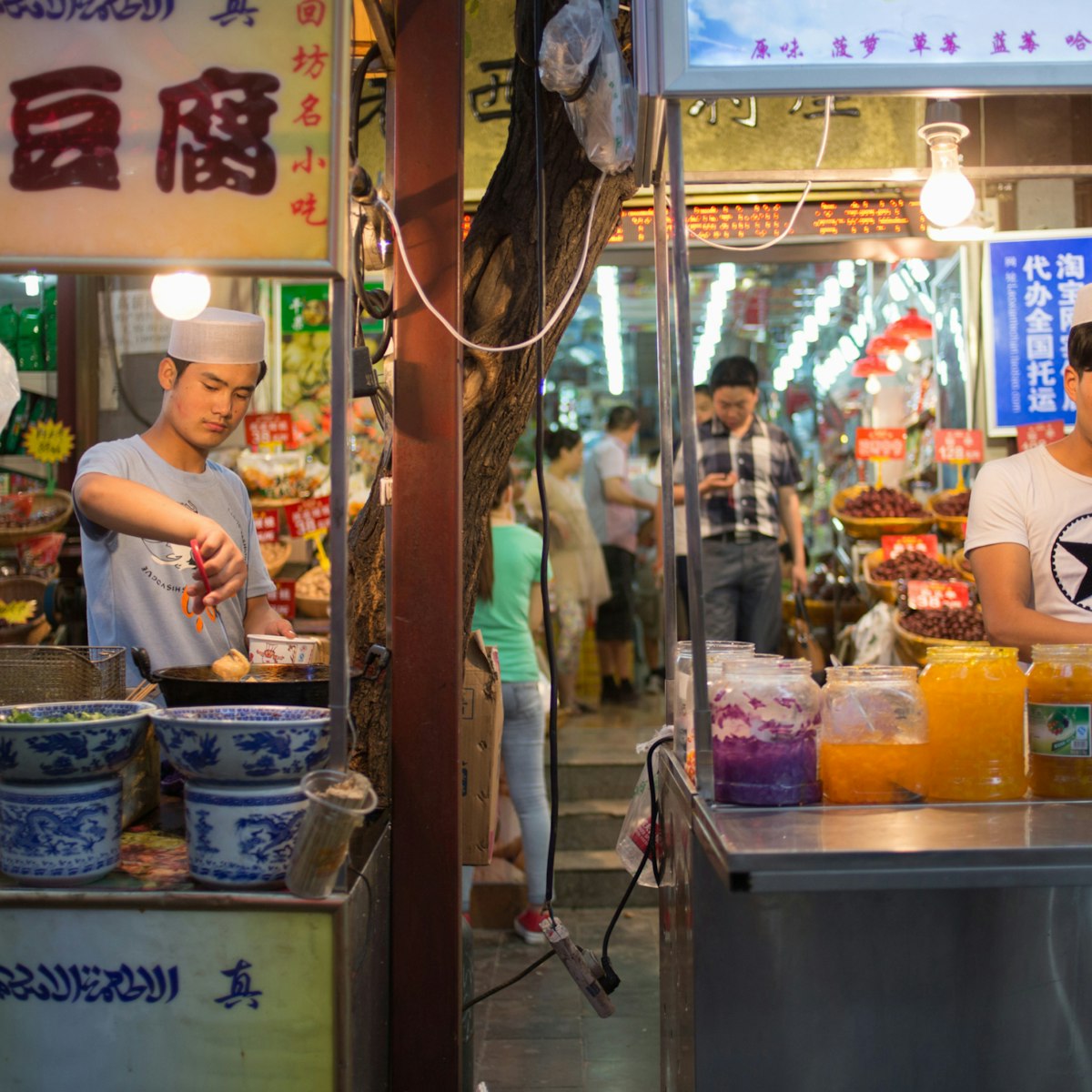The Terracotta Army isn't just Xi'an's premier sight: it's one of the most famous archaeological finds in the world. This subterranean life-size army of thousands has silently stood guard over the soul of China's first unifier for more than two millennia. Either Qin Shi Huang was terrified of the vanquished spirits awaiting him in the afterlife or, as most archaeologists believe, he expected his rule to continue in death as it had in life.
Whatever the case, the guardians of his tomb – who date from the 3rd century BC – today offer some of the greatest insights we have into the world of ancient China.
The discovery of the army of warriors was entirely fortuitous. In 1974 peasants drilling a well uncovered an underground vault that eventually yielded thousands of terracotta soldiers and horses in battle formation. Throughout the years the site became so famous that many of its unusual attributes are now well known; in particular the fact that no two soldier's faces are alike.
The on-site wrap-around theatre gives a useful primer on how the figures were sculpted. You can also employ a guide (low/high season ¥150/200) or try the audio guide (¥40, plus ¥200 deposit), although the latter is somewhat useless, being difficult to understand and not very compelling.
After this, visit the site in reverse, which enables you to build up to the most impressive pit for a fitting finale.
Start with the smallest pit, Pit 3, containing 72 warriors and horses; it's believed to be the army headquarters due to the number of high-ranking officers unearthed here. It's interesting to note that the northern room would have been used to make sacrificial offerings before battle. In the next pit, Pit 2, containing around 1300 warriors and horses, you can examine five of the soldiers up close: a kneeling archer, a standing archer, a cavalryman and his horse, a mid-ranking officer and a general. The level of detail is extraordinary: the expressions, hairstyles, armour and even the tread on the footwear are all unique.
The largest pit, Pit 1, is the most imposing. Housed in a building the size of an aircraft hangar, it is believed to contain 6000 warriors (only 2000 are on display) and horses, all facing east and ready for battle. The vanguard of three rows of archers (both crossbow and longbow) is followed by the main force of soldiers, who originally held spears, swords, dagger-axes and other long-shaft weapons. The infantry were accompanied by 35 chariots, though these, made of wood, have long since disintegrated.
Almost as extraordinary as the soldiers is a pair of bronze chariots and horses unearthed just 20m west of the Tomb of Qin Shi Huang. These are now on display, together with some of the original weaponry and a mid-ranking officer you can see up close, in a huge modern museum called the Qin Shi Huang Emperor Tomb Artefact Exhibition Hall (秦始皇帝陵文物陈列厅, Qǐnshǐhuángdìlíng Chénliètīng).
You can take photographs, although signs forbid using flash photography (widely ignored) or tripods.
Among rather tacky souvenir offerings, you can get your own warrior statue personalised with your own face (¥100) or have a photo taken next to a fake warrior (¥10). You can also pick up all manner of terracotta ornamentation – from warrior paperweights to life-size statues – from the souvenir shop in the theatre building. There's also a Friendship Store for jade, jewellery and so forth.
The Army of the Terracotta Warriors is easily reached by public bus. From Xi'an train station take one of the air-conditioned buses, either 914 or 915 (¥8, one hour), which depart every four minutes from 6am to 7pm. Take the bus to the last stop; the buses also travel via the Huaqing Hot Springs and the Tomb of Qin Shi Huang (which is included in the Terracotta Army). The car park for the vehicles is a 15-minute walk from the site, but you can take an electric buggy (¥5) instead if you want. If you want to eat here, there's a good cafe in the theatre building; and after you exit to walk back to the car and bus park, you will take another route past a whole assortment of restaurants and fast food, including a McDonald's. Buses head back to town from the parking lot.

